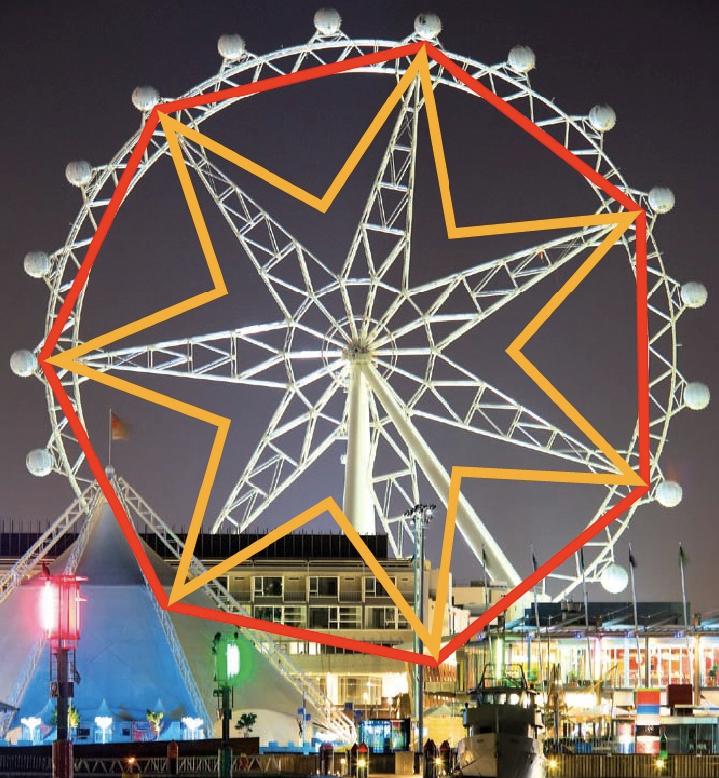Squaring the Southern Star
by Burkard Polster and Marty Ross
The Age, 9 March 2009

Melbourne’s Southern Star Observation Wheel opened recently – and closed soon after due to a design hiccup. Motivating its name are the seven spokes, reminiscent of the 7-pointed stars of the Southern Cross on the Australian flag.
Mathematicians have always been fascinated by 7-pointed things. It began in ancient Greece, when Euclid and his friends tried to figure out the possibilities for a ruler and a compass, the two tools that enable the simplest drawing of circles and lines.
This minimalist set of tools proved to be very powerful. However, there were a number of presumably simple constructions that Euclid and co were unable to perform. Perhaps the most notorious among these was the problem of squaring the circle: starting with a circle, your aim is to construct a square with exactly the same area.
A second problem, which turned out to be just as perplexing, was to construct a regular 7-sided polygon. Euclid knew how to draw equilateral triangles, squares, regular pentagons and regular hexagons, and infinitely many others. But many were missing: 7, 9, 11, 13, 14, 15, 17… Being the smallest, the regular 7-gon attracted the most attention.
It took 2000 years for any progress to be made. Then in 1796, the mathematical superstar Karl-Friedrich Gauss constructed a regular 17-gon. Gauss went further, and determined that the key to such constructions is the so-called Fermat primes: primes of the form

Gauss showed that one could always construct a regular polygon with a Fermat prime number of sides. However, the only known Fermat primes are 3, 5, 17, 257, and 65537.
What about regular polygons for the other primes? These turn out to be impossible to construct with ruler and compass. And we can check that 7 is not a Fermat prime. So, the construction of the Southern Star Observation Wheel must have involved different techniques!
Not too long after Gauss’s great achievements, it was shown that squaring the circle was also impossible. And we now have the expression “circle squarer” - used to deride someone engaging in an obviously impossible task. Such as someone hoping to profit from a $100 million observation wheel in Melbourne? We hope not, but time will tell.
www.qedcat.com
Copyright 2004-∞ ![]() All rights reserved.
All rights reserved.